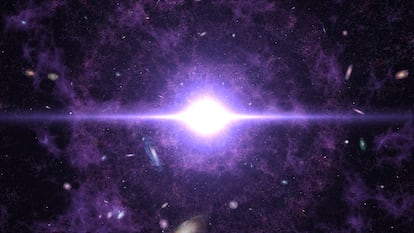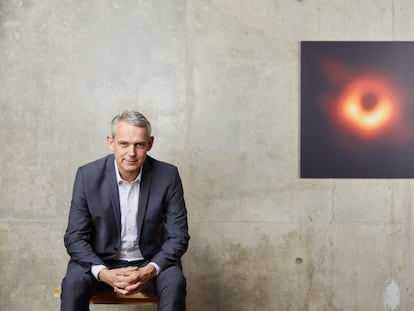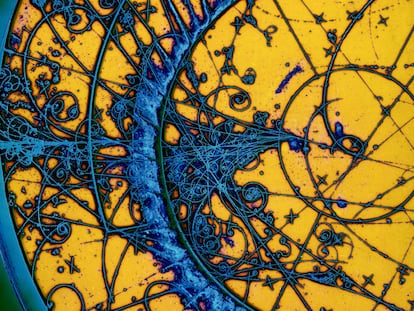Was all matter in existence formed in the Big Bang or is new matter still being created?
The Big Bang model is, for the time being, the one that best explains the universe

One of the hypotheses defended by the Big Bang model is precisely that what we observe today is indeed what was there at the beginning. I would like to remind the reader again, though, that the initial instant in which the universe began to expand is not described by the Big Bang because we do not yet have a model that can describe the gravitational interactions in that regime of quantum gravity. But a short time later, when the cosmos began to expand, the content of matter and energy that there was at that moment is what there is today and what there will be at the end.
In the beginning, the volume of matter was very small, but since the universe is expanding what happens, simply, is that density, that is, the energy per unit of volume, is diluted.
This also causes the universe to cool down. Today, outer space is a very cold place. Cosmological radiation — not the radiation that comes directly from the stars, but the background radiation — has a very low temperature: 2.7 kelvin (-270.5 °C or -454.9 °F). And yet, at the moment of the origin of everything, as you go backwards in the history of the universe, this radiation is much hotter. The expansion effect causes it to cool down.
So, the answer to the question is that what the Big Bang model predicts — which for the moment is the one that best explains the universe and its origin — is that all existing matter and energy were already there at the beginning. What may have been changing is the character of what we call matter and energy. To make it easier to understand, what we rely on to explain it is the particle physics model. And according to this model, particles can have mass. What we have to do is compare the mass of those particles at the temperature of each instant in the evolution of the universe. And that’s what has been changing. How much radiation did we have in the beginning and how much is left now?
However, if we calculate the energy at the beginning, it is the same as at the end. Although that energy, as the universe expands and cools, changes. When there is a lot of thermal agitation, as we imagine must have been the case at the origin, everything must have behaved as radiation, as energy. But, as it cools down, some of those particles stop behaving as relativistic, the thermal agitation decreases and they start behaving as our concept of matter, something with mass and small velocities, as for example, dark matter. You have to remember that in special relativity, matter and energy are interchangeable concepts. It is Einstein’s famous equation, something with mass can be converted into energy.
What we must take into account is its speed; whether it is something that moves at speeds close to the speed of light or whether it is something that would have much smaller and, therefore, non-relativistic speeds. When we say non-relativistic it means that they are thermal agitation velocities much lower than the speed of light. And what we call matter are, precisely, particles with slow velocities compared to the speed of light.
Sign up for our weekly newsletter to get more English-language news coverage from EL PAÍS USA Edition
Tu suscripción se está usando en otro dispositivo
¿Quieres añadir otro usuario a tu suscripción?
Si continúas leyendo en este dispositivo, no se podrá leer en el otro.
FlechaTu suscripción se está usando en otro dispositivo y solo puedes acceder a EL PAÍS desde un dispositivo a la vez.
Si quieres compartir tu cuenta, cambia tu suscripción a la modalidad Premium, así podrás añadir otro usuario. Cada uno accederá con su propia cuenta de email, lo que os permitirá personalizar vuestra experiencia en EL PAÍS.
¿Tienes una suscripción de empresa? Accede aquí para contratar más cuentas.
En el caso de no saber quién está usando tu cuenta, te recomendamos cambiar tu contraseña aquí.
Si decides continuar compartiendo tu cuenta, este mensaje se mostrará en tu dispositivo y en el de la otra persona que está usando tu cuenta de forma indefinida, afectando a tu experiencia de lectura. Puedes consultar aquí los términos y condiciones de la suscripción digital.
More information
Archived In
Últimas noticias
All the effects of gentrification in one corner of Mexico’s Colonia Roma
Palestinian reporter Youmna El Sayed: ‘My family told me I had to choose between being a journalist or a mother’
Russell Tovey: ‘I was advised many times not to come out, I don’t think there was many people who’d done that — and I feel really proud that I’m one of those that did’
Merz tries to replace Macron at the helm of Europe
Most viewed
- The low-cost creative revolution: How technology is making art accessible to everyone
- Families demand repatriation of bodies of Colombians who died in Ukraine: ‘This war is a slaughterhouse for foreigners’
- Christian Louboutin: ‘Young people don’t want to be like their parents. And if their parents wear sneakers, they’re going to look for something else’
- US sanctions against jailed cartel leader ‘El Marro’ highlight Mexico’s lack of control over its prisons
- Liset Menéndez de la Prida, neuroscientist: ‘It’s not normal to constantly seek pleasure; it’s important to be bored, to be calm’










































